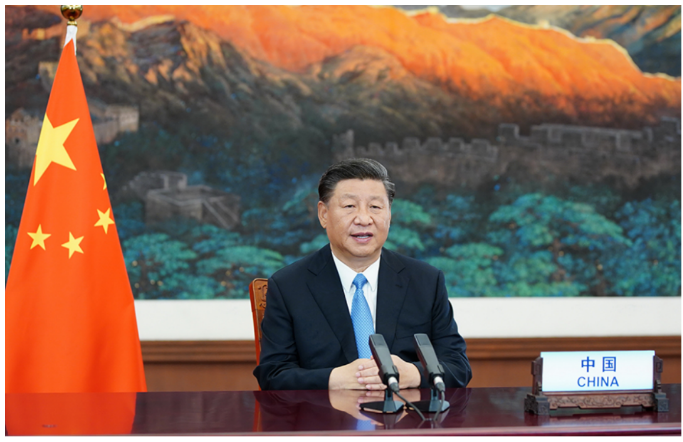Carbon neutrality by 2060! How the carbon market can bring "extra" benefits to the environmental industry
Recently, at the 75th session of the United Nations General Assembly, President Xi Jinping proposed that China should increase its nationally determined contributions and adopt more forceful policies and measures, and strive to peak China's greenhouse gas emissions before 2030 and strive to achieve "carbon neutrality" before 2060. This is China's longest-term commitment to reduce emissions since the signing of the Paris Agreement, and it is also an unprecedented quantitative commitment. The announcement of this commitment has been widely recognized and highly praised by the international community, but in the face of an increasingly complex international situation, it is a very urgent and challenging task for China to plan and improve its green and low-carbon development path and achieve "carbon neutrality" through what means.

Source: Xinhuanet Xi Jinping's speech at the general debate of the 75th session of the United Nations General Assembly (full text)
"Carbon neutrality" means a more economical, cleaner and safer energy structure, so the transformation of the energy structure and the green and low-carbon transformation of the social economy will face greater pressure and time compression. It is likely that the total amount of carbon emissions will be accelerated, not just the carbon intensity. As early as 2011, with reference to the foreign cap-and-trade carbon trading system, the National Development and Reform Commission promoted Beijing, Tianjin, Shanghai, Chongqing, Hubei, Guangdong and Shenzhen 7 pilot carbon emissions trading, in 2016 Fujian launched its own carbon trading pilot, as of September 2019, the cumulative quota trading volume of 8 pilots exceeded 330 million tons, and the transaction volume reached 7.1 billion yuan. At the end of 2017, the National Development and Reform Commission promulgated the "National Carbon Emission Trading Market Construction Plan (Power Generation Industry)", marking the official launch of the national carbon market; Recently, the Ministry of Ecology and Environment of the People's Republic of China issued a notice on publicly soliciting opinions on the "National Carbon Emission Trading Management Measures (Trial)" (Consultation Draft) and the "National Carbon Emission Allowance Registration and Trading Settlement Management Measures (Trial)" (Consultation Draft). We can see that after several years of preparation, the national carbon market is ready to operate.
Against this backdrop, it is difficult for every industry and enterprise to stay out of the situation, and leading companies have put forward their own carbon neutrality goals and actively participated in the carbon market to deal with future "gray rhinoceros" events. So how can the traditional environmental protection industry participate in the carbon market, and can it benefit from it?
The carbon offset mechanism based on CCER is a very innovative design of the carbon market, which allows emission control enterprises to purchase a certain proportion of voluntary emission reduction projects to offset their own excess emissions, so as to create a "rigid demand" for CCER project owners, and these projects usually come from wind power, photovoltaic and forestry carbon sink projects, but not limited to these types, sewage treatment, waste incineration, household biogas and other seemingly unrelated fields can also provide CCER, Such traditional environmental projects can reap "additional" benefits through the carbon market. As of the last trading day of October 2020, a total of 26 million tonnes of CCER had been traded, with a turnover of RMB183 million, and the current price of CCER has reached the level of 30 yuan/tonne, which includes emission reductions contributed by projects such as Shougang's biomass power generation. These environmental protection projects artificially eliminate methane, a greenhouse gas, in the process of sludge harmless treatment, waste incineration/landfill gas power generation, biogas treatment, etc., thereby generating additional greenhouse gas emission reductions. This is a cost-effective business for the traditional environmental protection industry, and the project owner can obtain excess benefits in the next 10 or 21 years (the period when the project's two emission reductions are included), which is a new opportunity for "icing on the cake".







